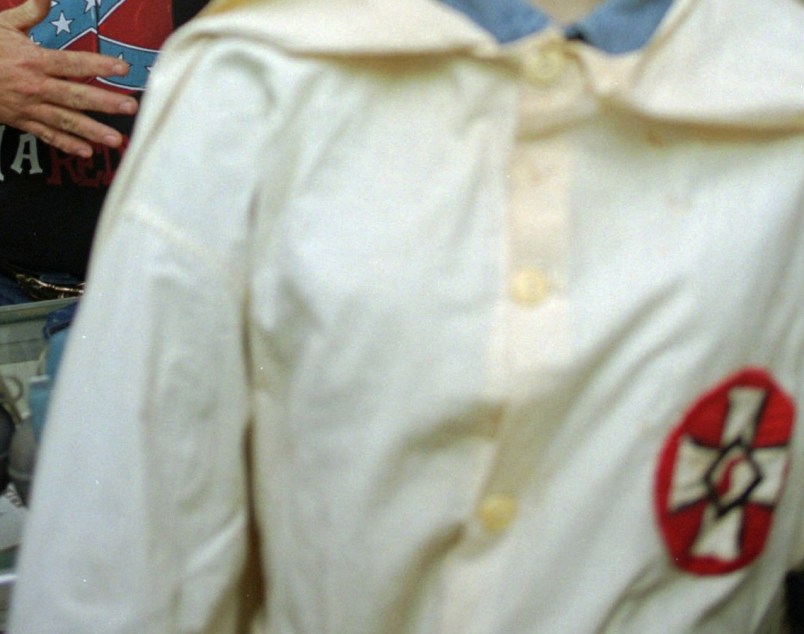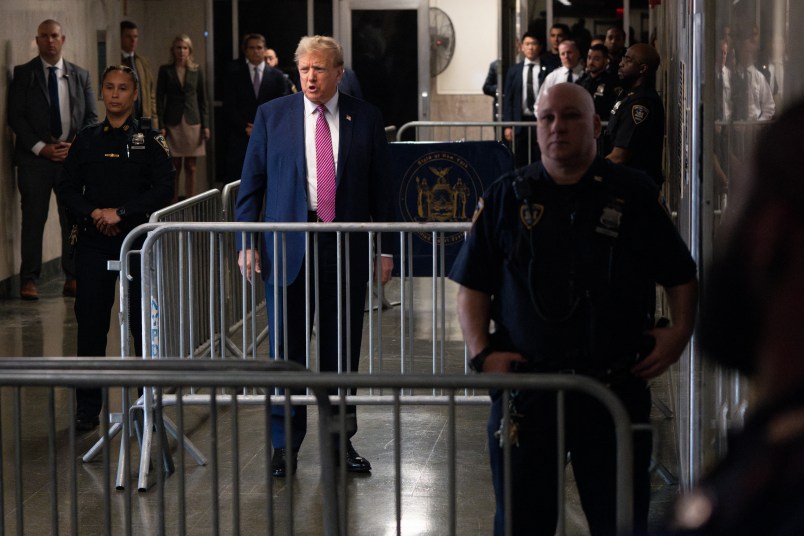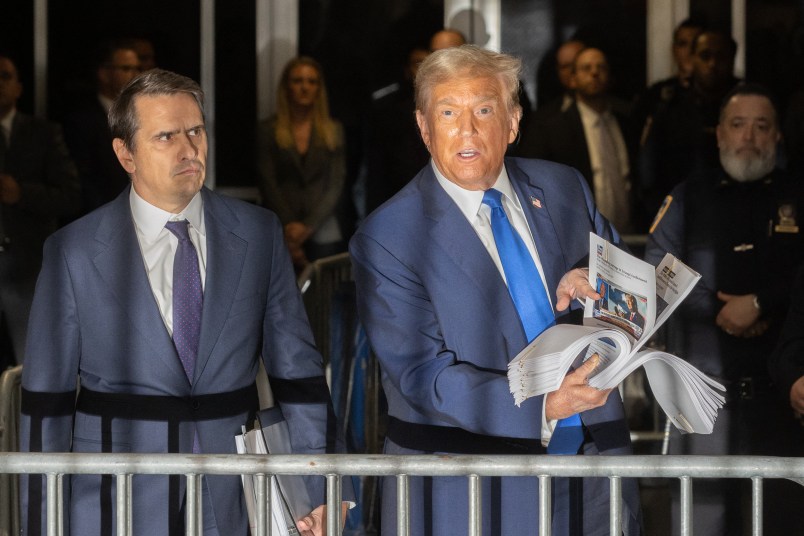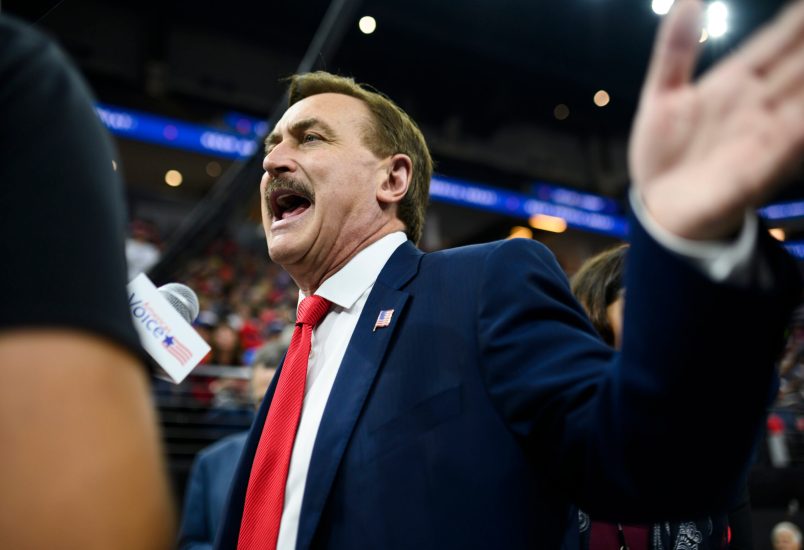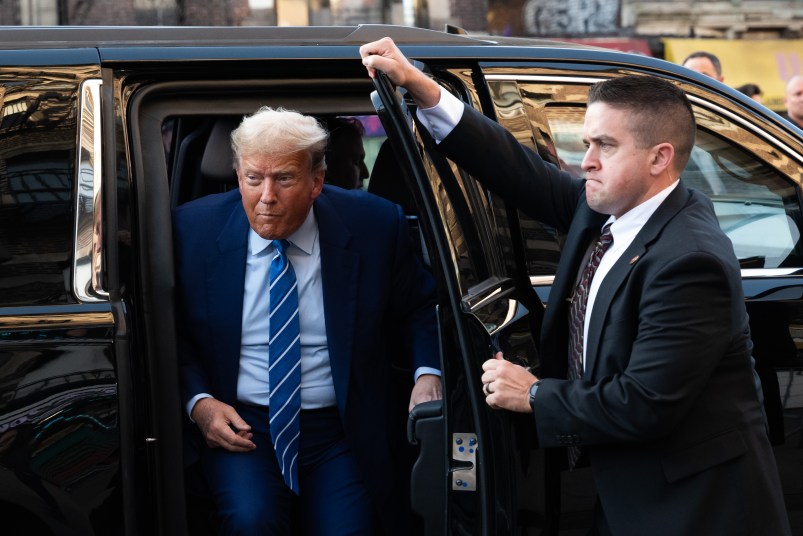DENVER (AP) — It’s a provocative image, for sure, and Denver’s police unions complained when they saw the student’s artwork honored in the school system’s annual best-of-city show: It depicts an officer wearing a KKK hood and pointing a gun at a black child, who has his hands up while wearing a white hoodie. In the background, a version of the American flag is ripped open to reveal a Confederate banner.
The Denver school district’s communications chief, Nancy Mitchell, said the girl immediately asked to take her painting out of the award show when she shared the criticism with her.
“She’s passionate about her art, but didn’t want to make trouble,” Mitchell said.
Trouble followed nonetheless — even though authorities insisted that the girl was not pressured to remove her work — as her act of apparent self-censorship brought much more attention to the controversy. To hear her out, Denver’s mayor, police chief and school superintendent arranged a private meeting Friday with the 10th grader and her mother, who was provided with a Spanish-language translator for the encounter in the principal’s office of her arts-magnet school.
“We just had a conversation with this very mature, steady, confident, beautiful, articulate young lady,” the mayor said later.
And while authorities insist that the teenager has not been pressured to withdraw her work, neither have they named her; officials say she did not want to speak publicly.
New York artist Michael D’Antuono, whose “A Tale of Two Hoodies” inspired the Denver student’s mixed-media work, worries that she might have felt bullied. “She should have been praised an encouraged for sparking critical thought,” said D’Antuono, who painted his image to protest racism after the fatal shooting of black teenager Trayvon Martin by a neighborhood watch volunteer.
D’Antuono said the telephone interview Friday that he has received sharp criticism and even death threats for his own politically charged work, which can feel overwhelming even to adults.
It’s not censorship if the student willingly withdrew her work, said Frank LoMonte, a lawyer who directs the Washington-based Student Press Law Center, which educates students about the First Amendment. But LoMonte worries that this situation may make young people in Denver feel less willing to talk about their fear of police.
“However well-founded or not that fear may be, it’s real, it exists, and it’s something the community should be discussing,” LoMonte said.
According to a statement from the school district and the city, the student’s assignment was to take inspiration from historic works and place them in the context of contemporary issues. She chose the Spanish master Francisco de Goya’s “The Third of May 1808,” a 19th-century statement against tyranny that shows a firing squad executing a group of captured rebels; and D’Antuono’s painting, which is similar, but shows the young boy offering candy to the officer while being held at gunpoint.
Other pieces in the school district exhibit, displayed in the light-filled lobby of a government building where Denverites pay parking tickets, included still-lifes inspired by Georgia O’Keeffe and sketches of dancers that nod to Matisse. Denver’s Police Protective Association singled out the “Two Hoodies” image, saying it “perpetuates hate and dissension between the police and our citizens.”
Mayor Michael Hancock and Police Chief Robert White, who are both black, stressed after meeting with the young artist that they are not in favor of stifling creativity or public debate about tough topics such as racism, violence and the proper role of law enforcement. Both insisted she faced no pressure, and went to some lengths to expand on the issues they said she had hoped her work would raise.
The mayor said the student wanted to shed light on the Klan’s history in Denver and Colorado. Scholars have documented the KKK’s prominence in the region’s politics and its influence over the Denver police department in the 1920s.
The police chief said the teen also expressed concerns about contemporary issues. Last year, Denver officers shot and killed 17-year-old Jessica Hernandez, who was driving a stolen car toward police. The Hernandez shooting prompted demonstrations in Denver, which also has seen protests over the deaths of Michael Brown in Ferguson, Missouri, and Eric Garner in New York.
“There’s still a lot of work to be done,” the chief said, adding that changing the public’s perception of police officers “can only be done through conversation.”
The mayor added: “The children are watching and they want to be involved in the solutions.”
Ken Paulson, president of the Washington-based Newseum Institute’s First Amendment Center, said clashes over politics, art and public space usually involve established artists. Earlier this year, for example, a Nevada school district issued an apology after a teacher used a photograph of “A Tale of Two Hoodies” as a writing prompt.
In the Denver case, “I think it’s encouraging that a young person could incorporate topicality and headlines into their art.” Paulson said. “That’s what art does. Art reflects real lives and real concerns.”
Copyright 2016 The Associated Press. All rights reserved. This material may not be published, broadcast, rewritten or redistributed.





